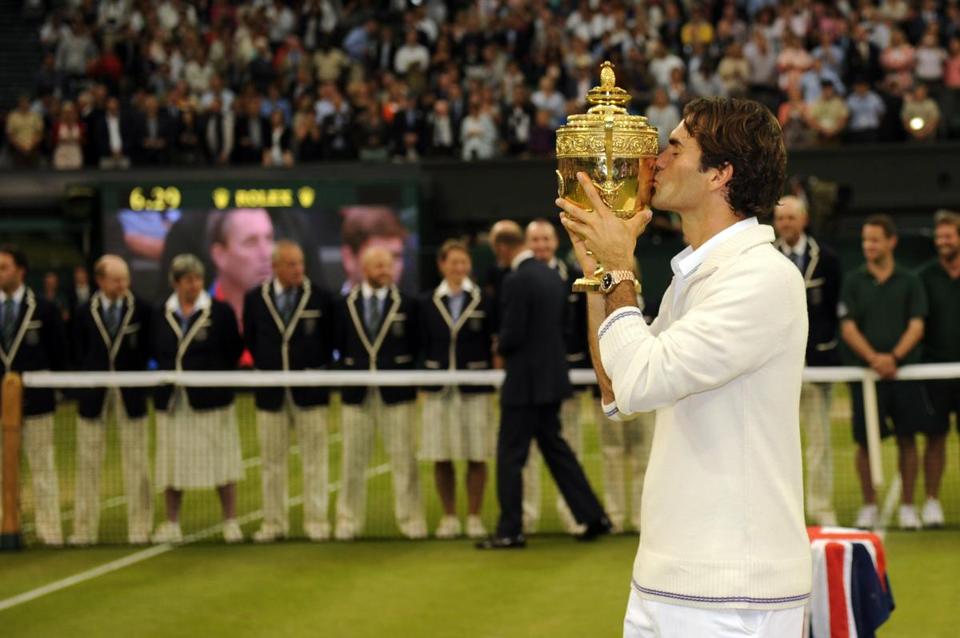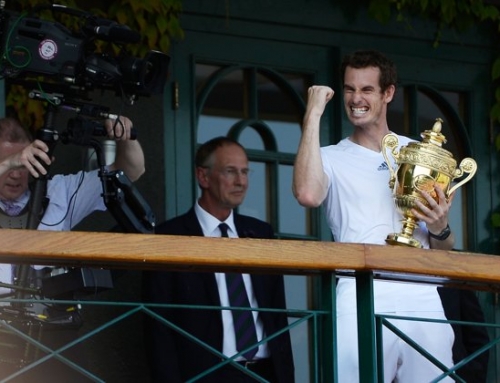 The point lead seemed insurmountable. Novak Djokovic had had the best year of any player in quite some time. Even with his loss to Nadal at the French, he was still the reigning champ in the other 3 Slams.
The point lead seemed insurmountable. Novak Djokovic had had the best year of any player in quite some time. Even with his loss to Nadal at the French, he was still the reigning champ in the other 3 Slams.
But somehow, Roger knew. He knew, if a series of events happened, he just might make it to number one.
In particular, once Roger lost in the semis of the US Open–surely, part of his plans to get to number 1, but brushed aside when Djokovic slashed a crosscourt return for a winner, and then again when Federer went for a big shot, clipped the net, and saw the ball land wide. Federer would go to lose the game, then another, and lead Djokovic to his US Open title.
The plan started pretty much after the US Open. Federer won Basel (again), Paris (for the first time), and more importantly, went undefeated in the year-end tournament when everyone was beaten up. Fed knew that with that win, he would claim 1500 points which is three-quarters of a Slam. And he does so playing 5 matches, not 7, all best-of-three sets. To be fair, all players in the top 8.
Federer did something peculiar. He entered Rotterdam. Surely, the calculations must have showed that he needed Rotterdam to get the point total to where he wanted it because he rarely plays before Dubai after the Australian Open. And, oh yes, he played Dubai, and beat Andy Murray in the finals. And, he won Indian Wells. Federer pushed hard at these smaller events knowing that he wasn’t winning the Slams, though he would, as usual, go deep.
Of course, part of Federer’s plan was to shore up a few weaknesses. For three years, Federer struggled returning serves at Wimbledon. If he couldn’t solve this problem, he’d be out early once again. This year, he broke more often than any other player. It didn’t hurt that he had a very nice draw, though he was perilously close to losing to Benneteau (it was the equivalent of beating Tommy Hass in the 2009 French) and struggled his way through Malisse.
Federer also needed to beef up his backhand. When Fed won his last Slam, back in 2010 at the Australian Open, his backhand looked impeccable. But with an injury, his game slipped back and his backhand struggled. It didn’t start to look good again until about December of last year when it was, once again, looking solid.
Federer generally defends off his backhand. He doesn’t try to go for winners on that side. However, he had been struggling with his backhand. What used to work well for him defensively was now being picked on. He couldn’t hit hard, for a lot of shots. To play with the big boys, he needed to pick up the pace on the backhand, and be able to hit it 6, 7, 8 shots in a row at high pace without missing. This all climaxed at the semifinals of this year’s Wimbledon where Federer dared to stare in the mouth of a lion (a Serbian lion, at that) and go toe to toe with Djokovic, backhand to backhand. Mano a mano. (Which, in the translation, does not mean “man to man”, but “hand to hand”).
It would, of course, help if Federer could avoid playing Nadal, though surely, he thought Nadal would reach the finals of Wimbledon. But when he didn’t, he only had to manage the double of beating Djokovic and Murray, something he did as recently at 2009 when he beat Murray in the semis and Djokovic in the finals. Federer may have head issues with Nadal that go back half a decade or longer, but he still believes he can beat Djokovic. He still believes he can beat Murray.
The last time Federer was under threat in the rankings was shortly after the Asian swing when Murray declared that he wanted to end the year at number 3, ahead of Federer. This was, at the time, a very reasonable task. Federer would have to play amazing and Murray would have to play rather ordinary, for this plan to fail. Murray even entered in Basel, Federer’s home tournament, to give himself more of a point boost.
But Murray would have a funky injury that forced him to withdraw from Basel last year, and then he would get upset by Berdych in Paris, and then he would be injured in the ATP World Tour Finals.
Federer, meanwhile, would have a blazing post US Open run.
Federer’s had a pretty big gap to overcome. Djokovic had 12,280 points while Federer had 9,435. The difference: 2845 points.
Federer reached the quarters last year and earned 360 points. He won this year and earned 2000 points. Net gain: 1640 points.
Djokovic won Wimbledon last year and earned 2000 points. He reached the semifinals this year, and earned 720 points. Net loss: 1280 points.
Total gain by Federer: 1640 + 1280 = 2920 points. 2920 points – 2845 points = 75 points ahead.
By any measurement, 75 points is a pretty slim lead. But with it, this week, Roger ties Pete Sampras at 286 weeks at number 1. The only way for Djokovic to get ahead is for him to play a small event this week and go somewhat deep (say, semis). This would be clearly possible, and clearly easy. With so few of the top players playing the week after Wimbledon, Djokovic could easily find something he could win and put him back at number 1.
It would, of course, be pretty petty too. Roger will, at the very least, break Sampras’s record next week, and hold it for another week until the Olympics where that gap could be made up.
In the end, it’s hard to say Roger didn’t have some idea that, should stars align, was possible and that this goal, which 6 months ago, heck, even in February, seemed so remote a possibility, could happen. But Roger is clearly used to having things go his way.
And Sampras, who must have felt his records were unassailable–well, he has to see one more record fall. He still is tied with Roger for Wimbledon wins, but Roger must be eyeing that one as well.
Meanwhile, congrats to the great one. He still believed.
And now we do too.




![[US Open Men’s Final] Can Djokovic beat Nadal in the finals?](https://www.essentialtennis.com/wp-content/uploads/2013/09/20130909djokovic-500x383.jpg)


